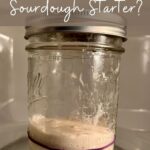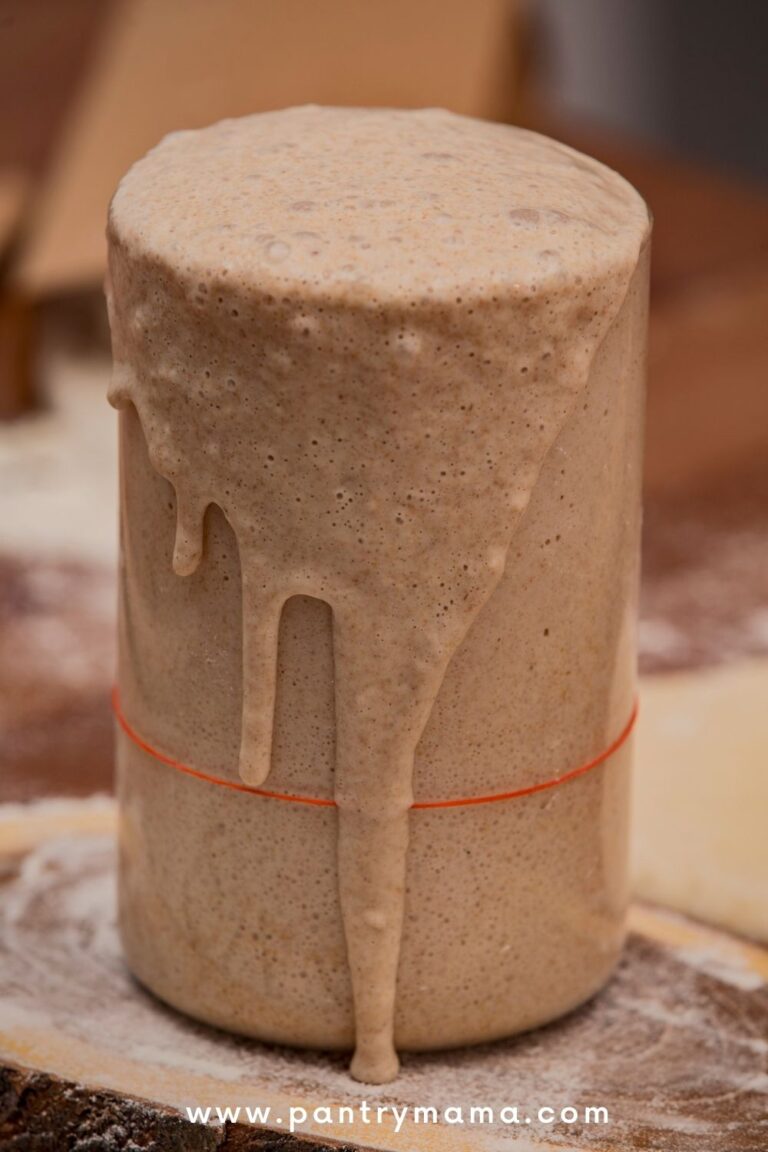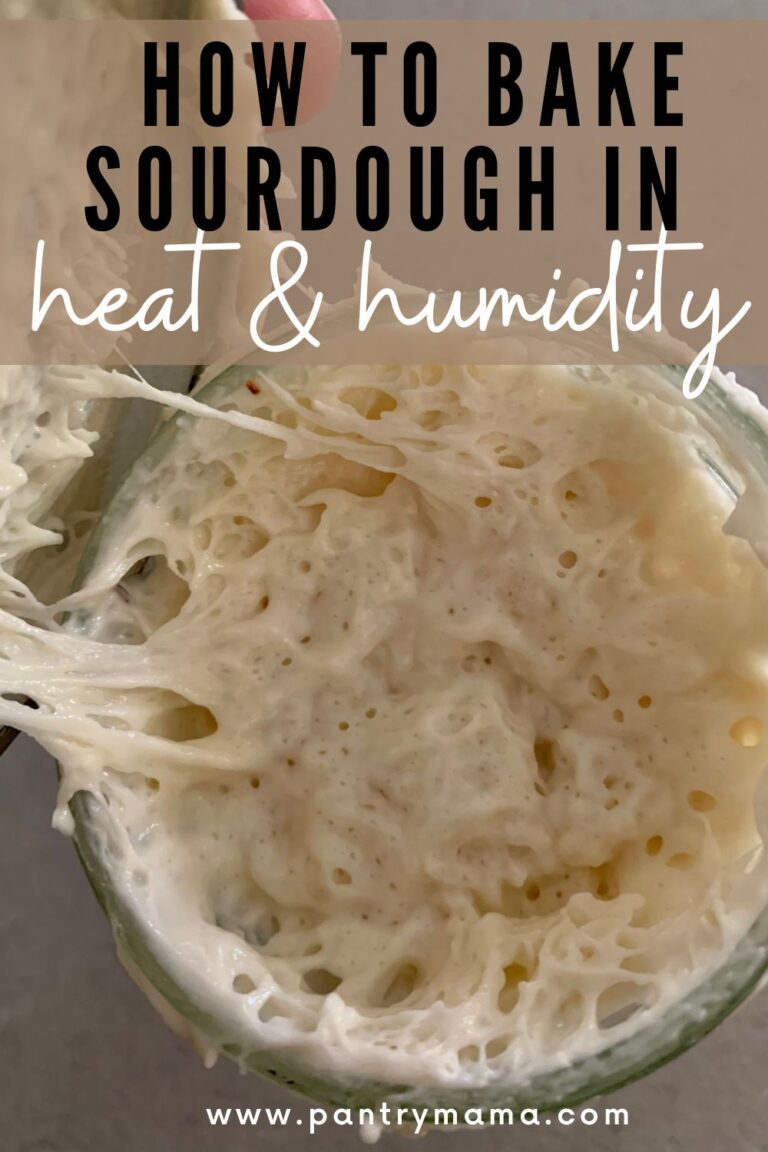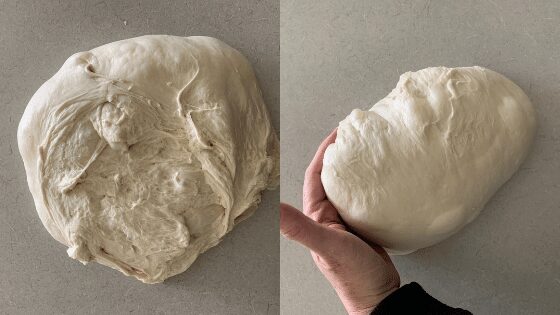Have I Killed My Sourdough Starter?
This post may contain affiliate links.
One of the most frequently asked questions I get on a daily basis is "have I killed my sourdough starter?". Surprisingly, it's really hard to kill a sourdough starter and most of the time I'm able to advise how to bring the starter back to life.
Occasionally, a sourdough starter will not be able to be brought back to life, but it's pretty rare that this happens.
Unless you can see mold on your sourdough starter or it has visible signs of pink or orange, your sourdough starter is not dead!
Even if it has thick, dark colored liquid on top - it can still be brought back to life!
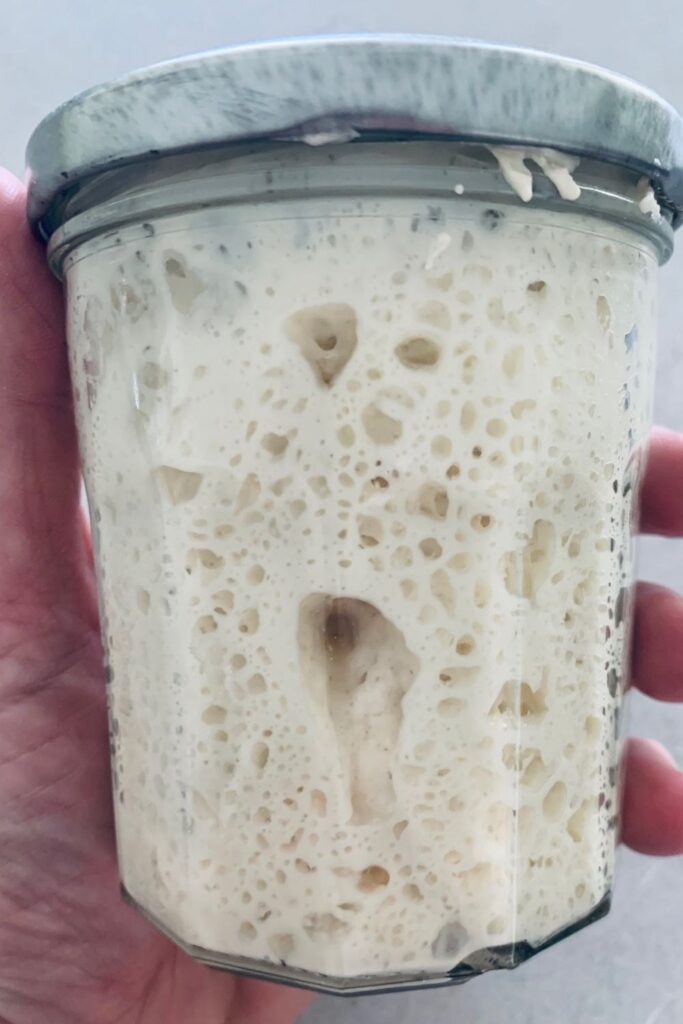
How Do I Know If I Killed My Sourdough Starter?
Sourdough starters are incredibly resilient. Unless there is visible mold in your jar or the starter has been exposed to extremely high temperatures, chances are your sourdough starter is alive.
So many people throw away their sourdough starter because they think it's dead - when in fact it's just a little sluggish and needs some attention.
How To Kill A Sourdough Starter
There are very few ways that you can kill a sourdough starter. They really are a tough colony of yeast and bacteria once they're established.
While it's always better to look after your sourdough starter and nourish your colony of yeastie besties, life happens. And sometimes we might neglect our starter more than we meant to.
Things that Will Kill A Sourdough Starter
- Starvation - if you don't feed your starter for a long period of time it will develop harmful bacteria and mold. This will smell terrible and look orange, pink or fuzzy and green.
- Mold - mold can also occur in a well fed starter if there are mold spores on any of the equipment you've used or in the flour you're using.
- High Temperatures - preheating your oven with your sourdough starter inside can lead to your starter's demise - but it would have to be completely baked for it to be completely unresponsive to some TLC.
Things That Will Not Kill A Sourdough Starter
- Low Temperatures - it will just be a bit sluggish.
- Freezing - your starter won't like being frozen, but it won't die.
- Dark Layer of Hooch - it might look really bad but it's completely fixable.
- Kahm Yeast - it's not ideal but it's not going to kill your starter either.
- Accidentally adding Self Rising Flour, Salt, Sugar or something similar - we've all been in a hurry and sometimes people accidentally feed their starter something they shouldn't. These types of things won't kill your starter (as long as it's only one feed).
- Water Choice - tap water with chlorine or reverse osmosis water will not kill your starter. It might make them sluggish, but you can change the water you feed it.
- Changing Flour - changing the type of flour you feed your starter may make it sluggish, but it will not kill your starter.
- Bleached Flour - it might be extremely slow and sluggish but it will not die.
- Using All of the Starter Except a Small Scraping - you only need a tiny bit of starter to keep it going!
- Overfeeding - overfeeding will slowly dilute the starter and put it out of balance acidity wise, but with some love and care it can be revived.
See what I mean, your sourdough starter really will stand up to a lot of variables and even a bit of neglect.
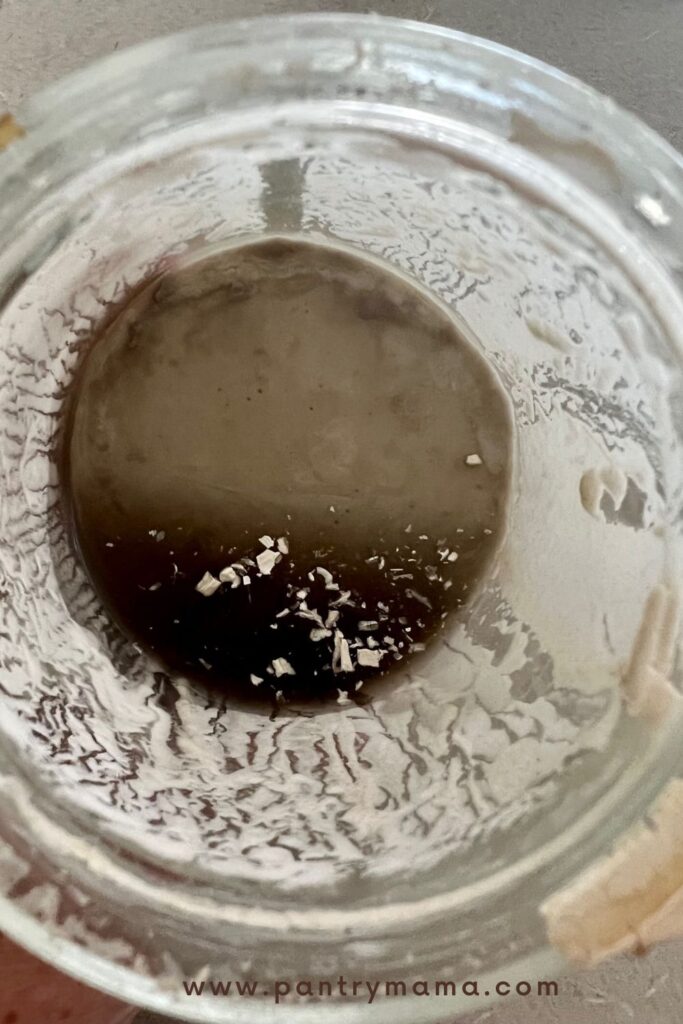
How Long Can A Starter Survive Unfed?
As with most things in sourdough - it depends! Sourdough starters are more resilient than we give them credit for.
However they are a living organism and therefore require food in order to survive.
If your sourdough starter is new and less than a month old, it might not be able to survive very long without feeding. I wouldn't go more than 24 hours without feeding a very young sourdough starter (it may survive longer than this unfed however you will leave it open to the risk of mold).
Mature sourdough starter aged more than 6 months old should be able to survive unfed on the counter for around 3-4 days without any risk of mold. The caveat here is if the temperature is very hot, this timeframe would be reduced.
A mature sourdough starter will survive unfed in the fridge for months. It might develop a thick layer of hooch. It will look and smell terrible. But it can be revived.
You will find full instructions for bringing an old sourdough starter back to life here.
Help! I Baked My Sourdough Starter In The Oven
I wish I had $5 for every person that has started their message to me with "help! I baked my sourdough starter in the oven!" It's a common occurrence unfortunately.
Many people keep their sourdough starter in the oven, particularly in the first few weeks, to keep it warm. Unfortunately, they themselves or their spouse has come along and preheated the oven without checking inside it first. This can spell disaster for your sourdough starter - but not always.
When trying to work out whether you have actually killed your sourdough starter, you need to answer a few questions:
- How hot was the oven and for how long?
- Is the sourdough starter still liquid (even just in the middle)?
- Does the starter have any discoloration?
If the starter hasn't been burned to a crisp and there's still some liquid starter, chances are you will be able to revive it.
How to revive a sourdough starter that has been baked in the oven:
- Take a clean jar and put 25g of water and 25g of flour into it.
- Using a clean knife or chopstick, take a small amount of "baked" starter from the middle of your sourdough starter (it will probably be around 5 to 10g).
- Mix the sourdough starter into the jar of flour and water and allow it to ferment for 12 hours.
- Now, add 25g of flour and 25g of water into the "new" starter.
- Allow that to ferment for 12 hours. Once 12 hours has passed, remove half the starter (around 50g) leaving 50g in the jar. Feed this with 50g of water and 50g of flour.
- Allow this to ferment for 12 hours. By this stage, you should see some bubbles forming (possibly even some rise, depending on just how baked your starter was).
If you don't see any action after 2-3 days of feeding your starter in this way, you may have killed your starter. But generally, so long as you didn't completely bake the starter to a solid, it will be able to be revived.
And when your starter has recovered, here are some better ideas for keeping it warm.
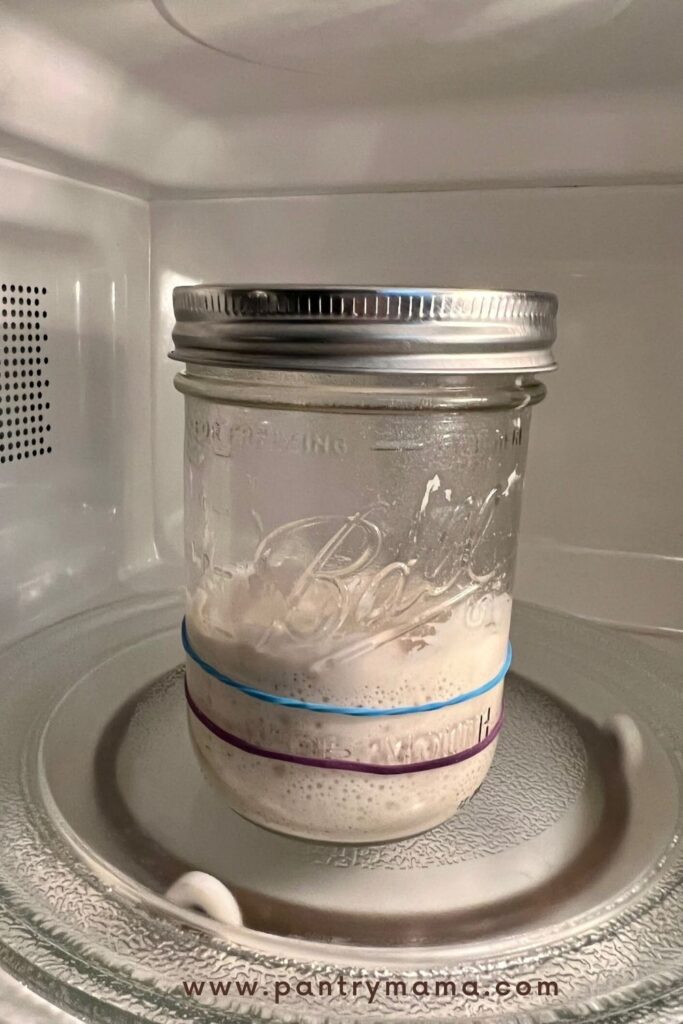
What Does Bad Sourdough Starter Look Like?
It's usually pretty obvious when your starter has gone bad.
You will either see mold or discoloration (generally pink or orange).
If you see either of these things, you will need to toss your starter.
The smell is usually a big give away. A starter that has orange or pink discolouration will usually smell absolutely foul.
I've written a full guide to diagnosing mold and bad bacteria in a sourdough starter here.
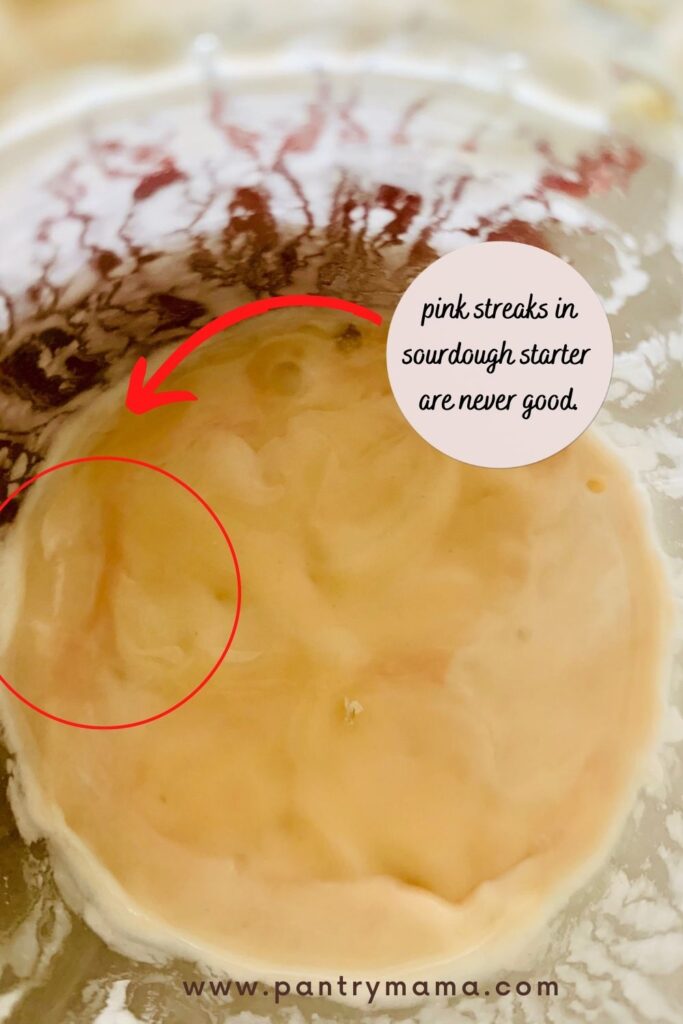
What Does Healthy Sourdough Starter Look Like?
A healthy sourdough starter will have a pleasant smell. It will have a yeasty smell with a bubbly surface. It should not have any discoloration and will rise and fall after it's been fed.
The starter in the photo below is a healthy, active starter. It has been fed recently and has falled (as can be seen by the dip in the centre). It is bubbly and has a consistent creamy color.
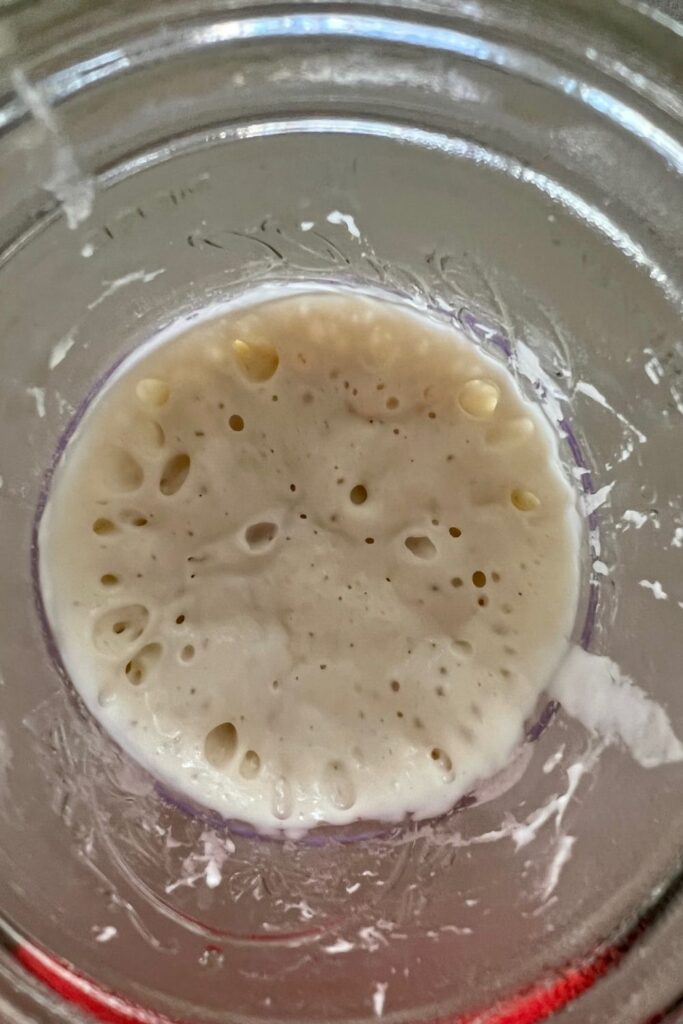
What If My Starter Never Rises? Is It Dead?
It depends! You need to ask a few questions before you ascertain whether your sourdough starter is dead.
The biggest factor in determining whether your starter is dead because it never rises is how old it is. If your starter is less than a month old, it's not dead, it's just not rising yet. You need to be patient! But if it's still rising after a month of feeding, you will need to troubleshoot.
If your starter is older than this and has been rising previously, but is no longer you may just need to give it a boost.
What If I Used All The Starter In My Jar - Did I Kill It?
Unless you completely washed the jar out clean, you haven't killed your sourdough starter. Even if you used all of the starter in your jar except 1g, your starter can still live on!
Even if you smash the jar your starter lives in, if you can scrape a tiny bit from the rim of the jar (if it didn't shatter) you can feed it and it will live on.
You cannot kill your sourdough starter by using nearly the whole lot - you just need a tiny amount to feed and it will continue the sourdough legacy.
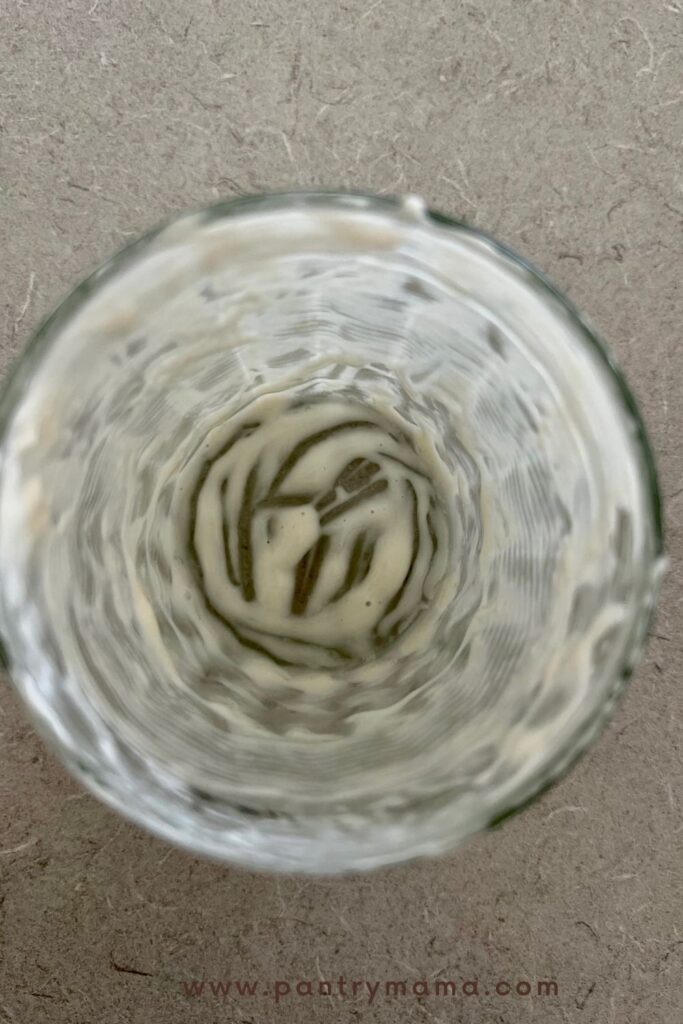
How To Revive Sourdough Starter From A Tiny Amount (Scrapings)
Here's how to keep your starter alive with just a tiny amount of starter left:
- If you just have the "dregs" left in the jar, then add the flour and water into the same jar. If you are using a tiny "scraping" from another jar, put it in a clean jar and add the flour and water over the top.
- To your tiny bit of starter, add 10g of flour and 10g of water.
- Let it sit for 6 hours and then add another 10g of flour and 10g of water to that.
- In another 6 hours, add 30g of flour and 30g of water.
- Let that sit for around 12 hours, then discard half (25g) and add 50g of flour and 50g of water to the 25g of starter left in the jar.
- Once this has doubled, proceed to feed as you normally would or store it in the fridge.
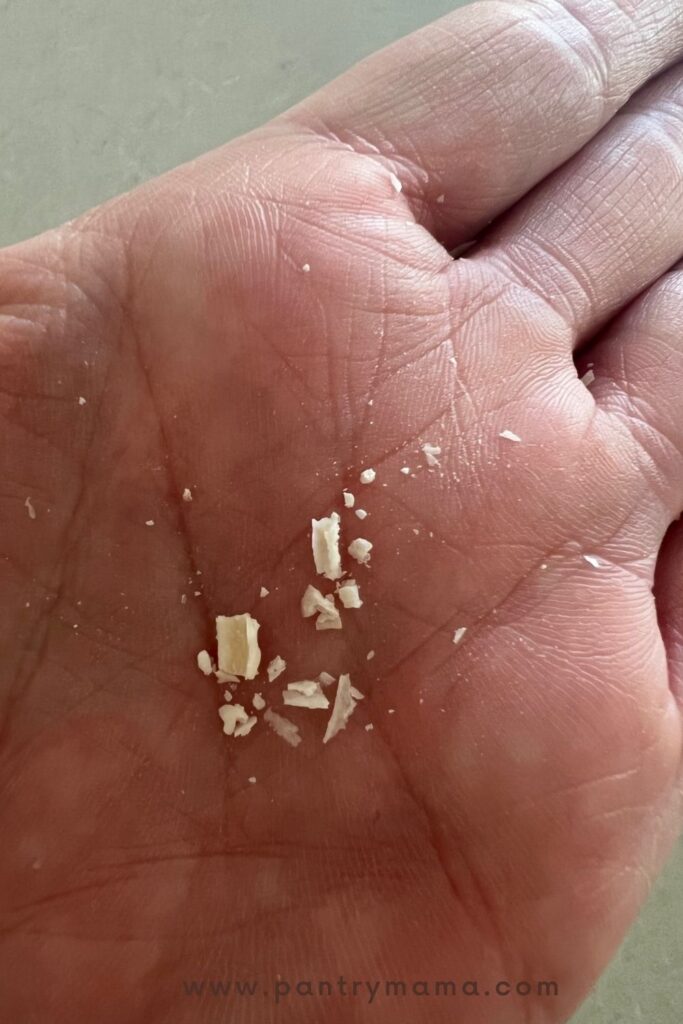
Can You Use A Piece of Dough To Keep Your Sourdough Starter Alive?
If you actually did use all of your sourdough starter and you've washed the jar - but you made some bread dough, you can keep your starter alive by using a small piece of dough.
It's better if you do this before you've added the salt to the dough, but even if you have added the salt, it will be ok.
This method works best with a lean dough - that is one that has no additions other than flour, water and salt.
Take a piece of dough, around 25g will work. Place the dough in a clean jar and feed it with 50g of flour and 50g of water. Continue to discard and feed every 12 hours until your starter is behaving normally.
This is really just for an emergency, it's much better to leave enough in your sourdough starter jar to feed for next time.
And you should always have a back up of your starter in the fridge or dried in the pantry.
Will Tap Water Kill My Sourdough Starter?
It's unlikely that tap water will kill your starter, however if it contains chlorine it might not be the best type of water to feed your sourdough starter.
Tap water is generally treated with chemicals like chlorine to make it safe to drink. But the chlorine is killing off the bacteria in the water. The chlorine in the water can have a negative effect on the bacteria that are trying to establish a colony in your sourdough starter.
It's for this reason that tap water is not ideal for a sourdough starter. You can read more about the best water for a sourdough starter here.
I Fed My Starter The Wrong Thing - What Do I Do Now?
Whether you've fed your starter bleached flour or self rising flour. Or maybe you accidentally added salt or used sugar instead. Honestly, I've seen many an accidental feeding. It's ok, it happens.
Don't stress - it won't kill your sourdough starter.
As long as it was only once you can definitely save your starter from an untimely demise.
Just make sure you discard down to 50g and then feed it with 100g of flour and 100g of water. When you feed it again, discard down to 50g and then you can resume 1:1:1 feeds.
Your starter might be a little sluggish - particularly if you added salt or bleached flour, but for the most part it will recover.
So Have I Killed My Sourdough Starter?
As you can see, it's pretty hard to kill your sourdough starter. Most of the time you will be able to revive your jar of bubbles! It might just take a little time and patience.
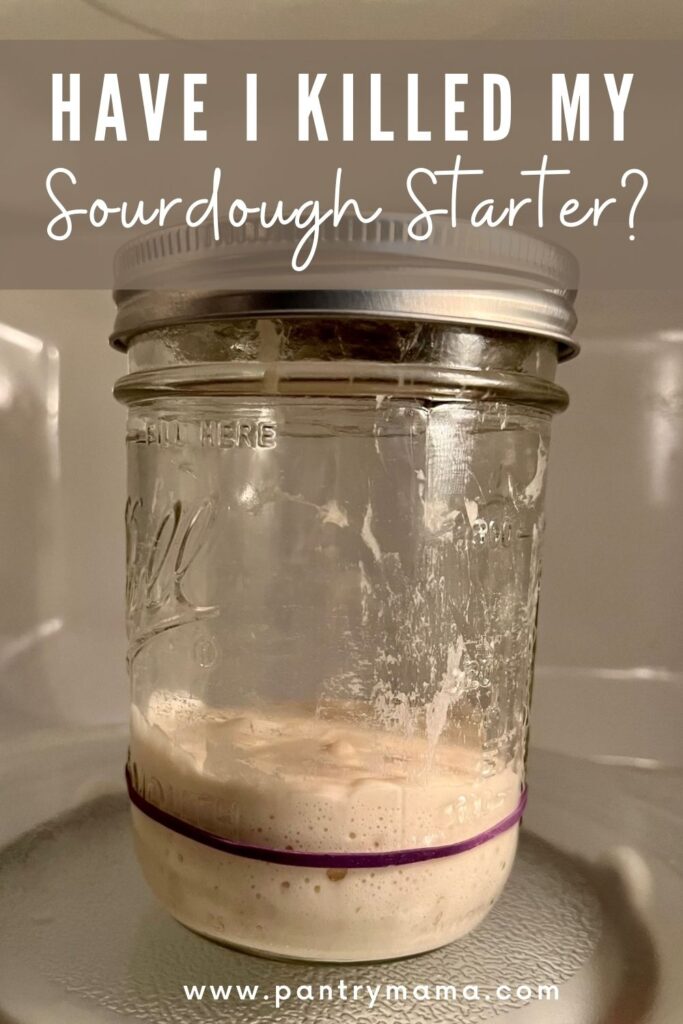
Want More Info?
If you would like more information around the topic of maintaining a healthy sourdough starter, you'll find it here:
- How To Diagnose a Moldy Sourdough Starter
- How To Revive An Old Sourdough Starter
- 5 Tips to Boost A Sourdough Starter
- Best Time To Use A Sourdough Starter

